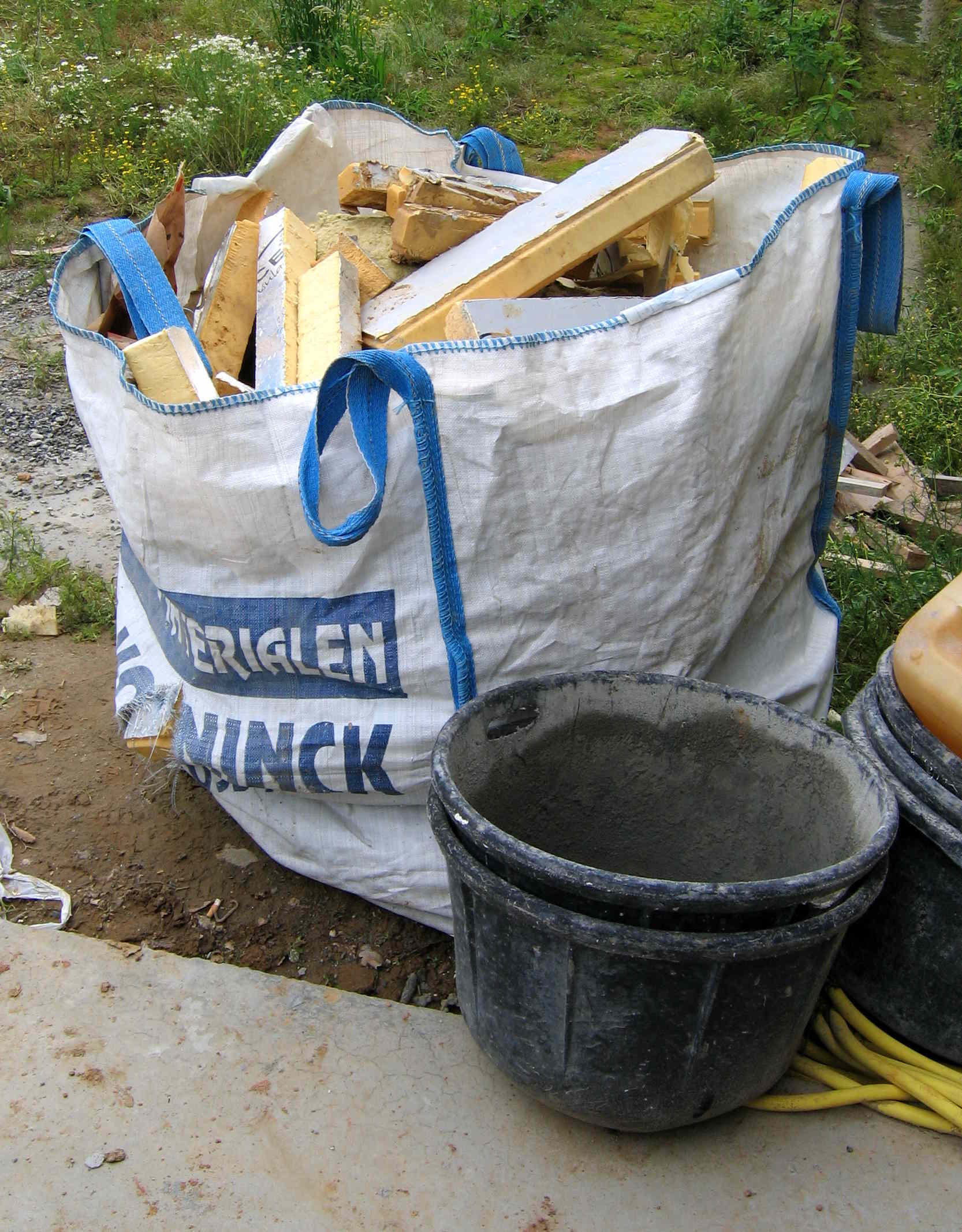|
Geonets
A geonet is a geosynthetic material similar in structure to a geogrid, consisting of integrally connected parallel sets of ribs overlying similar sets at various angles for in-plane drainage of liquids or gases. Geonets are often laminated with geotextiles on one or both surfaces and are then referred to as drainage geocomposites. They are competitive with other drainage geocomposites having different core configurations. Manufacturing Geonets are formed by a continuous extrusion process into a netlike configuration of parallel sets of homogeneously interconnected ribs. There are three categories of geonets. The following are illustrated: * ''Biplanar geonets:'' These are the original and most common types and consist of two sets of intersecting ribs at different angles and spacings. The ribs themselves are of different sizes and shapes for different styles. * ''Triplanar geonets:'' These have parallel central ribs with smaller sets of ribs above and beneath mainly for ge ... [...More Info...] [...Related Items...] OR: [Wikipedia] [Google] [Baidu] |
Geosynthetic
Geosynthetics are synthetic products used to stabilize terrain. They are generally polymeric products used to solve civil engineering problems. This includes eight main product categories: geotextiles, geogrids, geonets, geomembranes, geosynthetic clay liners, geofoam, geocells and geocomposites. The polymeric nature of the products makes them suitable for use in the ground where high levels of durability are required. They can also be used in exposed applications. Geosynthetics are available in a wide range of forms and materials. These products have a wide range of applications and are currently used in many civil, geotechnical, transportation, geoenvironmental, hydraulic, and private development applications including roads, airfields, railroads, embankments, retaining structures, reservoirs, canals, dams, erosion control, sediment control, landfill liners, landfill covers, mining, aquaculture and agriculture. History Inclusions of different sorts mixed with soil have ... [...More Info...] [...Related Items...] OR: [Wikipedia] [Google] [Baidu] |
Geotextiles
Geotextiles are permeable fabrics which, when used in association with soil, have the ability to separate, filter, reinforce, protect, or drain. Typically made from polypropylene or polyester, geotextile fabrics come in two basic forms: woven (resembling mail bag sacking) and nonwoven (resembling felt). Geotextile composites have been introduced and products such as geogrids and meshes have been developed. Geotextiles are durable and are able to soften a fall. Overall, these materials are referred to as geosynthetics and each configuration—geonets, geosynthetic clay liners, geogrids, geotextile tubes, and others—can yield benefits in geotechnical and environmental engineering design. History Geotextiles were originally intended to be a substitute for granular soil filters. The original, and still sometimes used, term for geotextiles is ''filter fabrics''. Work originally began in the 1950s with R.J. Barrett using geotextiles behind precast concrete seawalls, under precast ... [...More Info...] [...Related Items...] OR: [Wikipedia] [Google] [Baidu] |
Geocomposites
Geocomposite is a composition / combination of two or more geosynthetic materials to perform multiple number of geosynthetic functions for specific civil engineering application(s) the purpose of providing this composition is to minimize the application costs whereas the technical properties of the soil or the geotechnical structure are enhanced. There are five basic functions that can be provided: separation, reinforcement, filtration, drainage, and containment. Geotextile-geonet composites When a geotextile is used on one or both sides of a geonet, the separation and filtration functions are always satisfied, but the drainage function is vastly improved in comparison to geotextiles by themselves. Such geocomposites are regularly used in intercepting and conveying leachate in landfill liner and cover systems and for conducting vapor or water beneath pond liners of various types. These drainage geocomposites also make excellent drains to intercept water in a capillary zone w ... [...More Info...] [...Related Items...] OR: [Wikipedia] [Google] [Baidu] |
Geogrid
A geogrid is geosynthetic material used to reinforce soils and similar materials. Soils pull apart under tension. Compared to soil, geogrids are strong in tension. This fact allows them to transfer forces to a larger area of soil than would otherwise be the case. Geogrids are commonly made of polymer materials, such as polyester, polyvinyl alcohol, polyethylene or polypropylene. They may be woven or knitted from yarns, heat-welded from strips of material, or produced by punching a regular pattern of holes in sheets of material, then stretched into a grid. The development of methods of preparing relatively rigid polymeric materials by tensile drawing, in a sense "cold working," raised the possibility that such materials could be used in the reinforcement of soils for walls, steep slopes, roadway bases and foundation soils. The principal function of geogrids is for reinforcement. This area, as with many other geosynthetics, is very active, with a number of different products, ... [...More Info...] [...Related Items...] OR: [Wikipedia] [Google] [Baidu] |
Drainage
Drainage is the natural or artificial removal of a surface's water and sub-surface water from an area with excess of water. The internal drainage of most agricultural soils is good enough to prevent severe waterlogging (anaerobic conditions that harm root growth), but many soils need artificial drainage to improve production or to manage water supplies. History Early history The Indus Valley civilization had sewerage and drainage systems. All houses in the major cities of Harappa and Mohenjo-daro had access to water and drainage facilities. Waste water was directed to covered gravity sewers, which lined the major streets. 18th and 19th century The invention of hollow-pipe drainage is credited to Sir Hugh Dalrymple, who died in 1753. Current practices Geotextiles New storm water drainage systems incorporate geotextile filters that retain and prevent fine grains of soil from passing into and clogging the drain. Geotextiles are synthetic textile fabrics specially m ... [...More Info...] [...Related Items...] OR: [Wikipedia] [Google] [Baidu] |
Polyethylene
Polyethylene or polythene (abbreviated PE; IUPAC name polyethene or poly(methylene)) is the most commonly produced plastic. It is a polymer, primarily used for packaging ( plastic bags, plastic films, geomembranes and containers including bottles, etc.). , over 100 million tonnes of polyethylene resins are being produced annually, accounting for 34% of the total plastics market. Many kinds of polyethylene are known, with most having the chemical formula (C2H4)''n''. PE is usually a mixture of similar polymers of ethylene, with various values of ''n''. It can be ''low-density'' or ''high-density'': low-density polyethylene is extruded using high pressure () and high temperature (), while high-density polyethylene is extruded using low pressure () and low temperature (). Polyethylene is usually thermoplastic, but it can be modified to become thermosetting instead, for example, in cross-linked polyethylene. History Polyethylene was first synthesized by the German chemis ... [...More Info...] [...Related Items...] OR: [Wikipedia] [Google] [Baidu] |
Various Geonets
Various may refer to: * Various (band), an English dubstep/electronic music duo * Various artists, a term for a compilation album containing pieces by various musicians * Various authors, a book containing works by several writers * '' The Various'', a children's fantasy novel by Steve Augarde See also * Various & Gould, a Berlin-based artist duo * '' Various Artists – Archives Vol. 4'', an album by Steve Vai * '' Various Failures'', a compilation album by American experimental rock band Swans * '' The Various Haunts of Men'', a novel by Susan Hill * ''Various Positions'', an album by Leonard Cohen ** Various Positions Tour * ''Various Positions'' (film), a 2002 film directed by Ori Kowarsky * Varius (other) Varius is a Latin word meaning "diverse", "different", "changeable", "various" or "variegated" and may refer to: * ''Varius'' (moth), a genus of moths belonging to the small family Nepticulidae * Varius Manx, a Polish pop group * XKO Varius, a w ... * [...More Info...] [...Related Items...] OR: [Wikipedia] [Google] [Baidu] |
ASTM
ASTM International, formerly known as American Society for Testing and Materials, is an international standards organization that develops and publishes voluntary consensus technical standards for a wide range of materials, products, systems, and services. Some 12,575 ASTM voluntary consensus standards operate globally. The organization's headquarters is in West Conshohocken, Pennsylvania, about northwest of Philadelphia. It is founded in 1902 as the American Section of the International Association for Testing Materials (see also International Organization for Standardization). History A group of scientists and engineers, led by Charles Dudley, formed ASTM in 1898 to address the frequent rail breaks affecting the fast-growing railroad industry. The group developed a standard for the steel used to fabricate rails. Originally called the "American Society for Testing Materials" in 1902, it became the "American Society for Testing And Materials" in 1961. In 2001, ASTM offic ... [...More Info...] [...Related Items...] OR: [Wikipedia] [Google] [Baidu] |
International Organization For Standardization
The International Organization for Standardization (ISO ) is an international standard development organization composed of representatives from the national standards organizations of member countries. Membership requirements are given in Article 3 of the ISO Statutes. ISO was founded on 23 February 1947, and (as of November 2022) it has published over 24,500 international standards covering almost all aspects of technology and manufacturing. It has 809 Technical committees and sub committees to take care of standards development. The organization develops and publishes standardization in all technical and nontechnical fields other than Electrical engineering, electrical and electronic engineering, which is handled by the International Electrotechnical Commission, IEC.Editors of Encyclopedia Britannica. 3 June 2021.International Organization for Standardization" ''Encyclopedia Britannica''. Retrieved 2022-04-26. It is headquartered in Geneva, Switzerland, and works in 167 coun ... [...More Info...] [...Related Items...] OR: [Wikipedia] [Google] [Baidu] |
Construction Waste
Construction waste or debris is any kind of debris from the construction process. Different government agencies have clear definitions. For example, the United States Environmental Protection Agency EPA defines construction and demolition materials as “debris generated during the construction, renovation and demolition of buildings, roads, and bridges.” Additionally, the EPA has categorized Construction and Demolition (C&D) waste into three categories: non-dangerous, hazardous, and semi-hazardous. Of total waste in the United States, 90% comes from the demolition of structures, while waste generated during construction accounts for less than 10%. Construction waste frequently includes materials that are hazardous if disposed of in landfills. Such items inculude fluorescent lights, batteries, and other electrical equipment. When waste is created, options of disposal include exportation to a landfill, incineration, direct site reuse through integration into construction or a ... [...More Info...] [...Related Items...] OR: [Wikipedia] [Google] [Baidu] |
Hemming And Seaming
Hemming and seaming are two similar metalworking processes in which a sheet metal edge is rolled over onto itself. Hemming is the process in which the edge is rolled flush to itself, while a seam joins the edges of two materials.. Hems are commonly used to reinforce an edge, hide burrs and rough edges, and improve appearance. Seams are commonly used in the food industry on canned goods, on amusement park cars, in metal roofing (with a roof seamer), and in the automotive industry. Process The process for both hemming and seaming are the same, except that the tonnage (amount of force exerted) requirement is greater for seaming. The process starts by bending the edge to an acute angle. A flattening die is then used to flatten the hem. Types There are two types of hemmed edges: ''closed hems'' and ''open hems''. Closed hems are completely flush while open hems have an air pocket in the bend. The major difference is that the tonnage required for a closed hem is much greater than ... [...More Info...] [...Related Items...] OR: [Wikipedia] [Google] [Baidu] |








